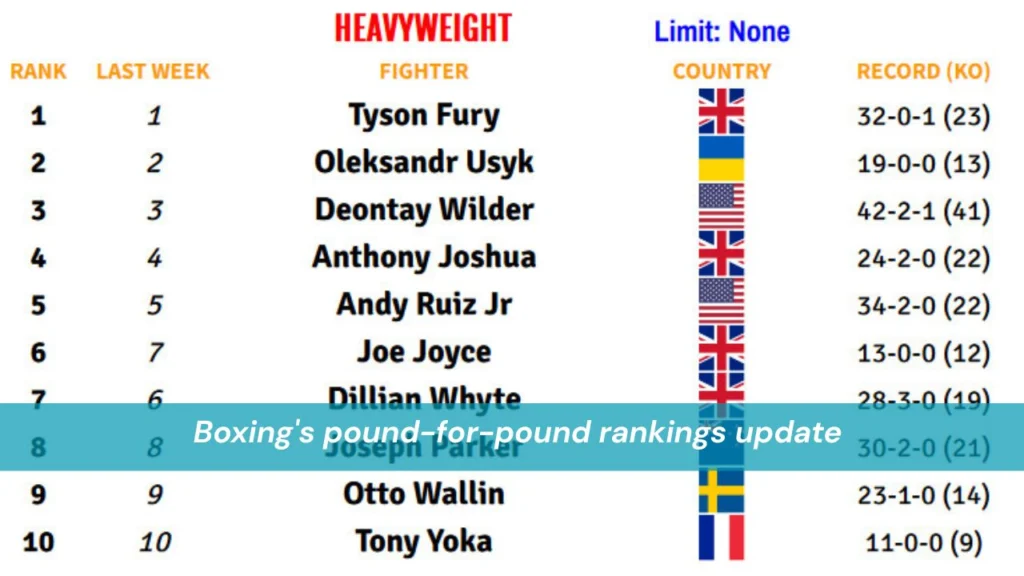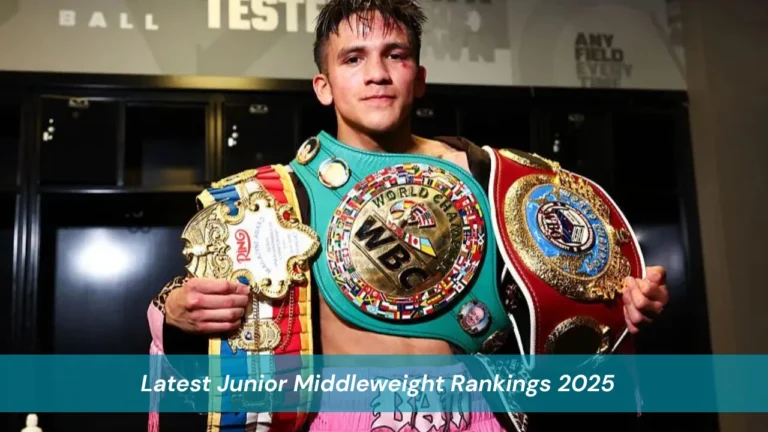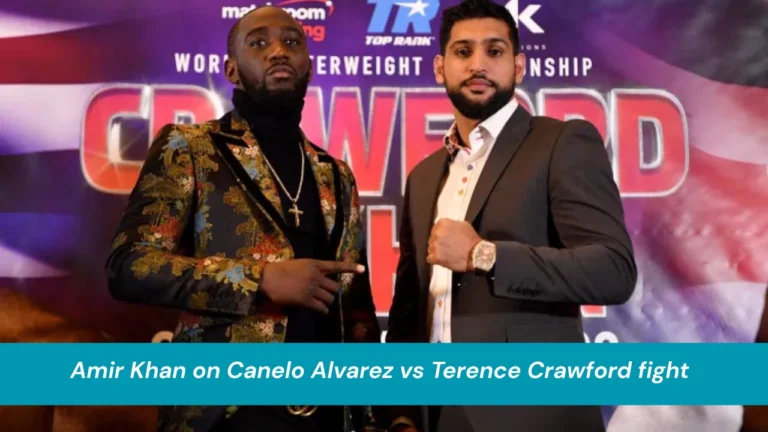In a sport where greatness is always one punch away from disappearing, Oleksandr Usyk has carved out a lane of historical dominance that few in modern boxing can match. After defeating Tyson Fury in May 2024 in a grueling 12-round bout, Usyk became the first undisputed heavyweight champion in the four-belt era and only the second man in history, after Evander Holyfield, to claim undisputed titles at both cruiserweight and heavyweight.
That victory didn’t just elevate Usyk in status, it elevated boxing itself. At a time when the sport has often struggled to get its biggest stars in the ring together, Usyk delivered. And the ripple effects of that performance are still being felt, as pound-for-pound rankings across the boxing world realign around his undisputed supremacy.
Oleksandr Usyk A Once-in-a-Generation Technician
Usyk’s win over Fury in Riyadh was more than just tactical brilliance; it was a display of mental and physical endurance, a reminder that boxing at its highest level is a game of inches and composure. Despite being the smaller man, Usyk imposed his rhythm, picked his shots, and even had Fury on the verge of a stoppage in the ninth round. Though the fight ended in a split decision, many ringside observers and analysts including ESPN and Sky Sports scored it clearly for the Ukrainian. With that victory, Usyk improved his record to 22-0 with 14 KOs and placed himself in rarefied air. He’s now widely regarded as the top pound-for-pound fighter in the world, ahead of modern icons like Naoya Inoue and Terence Crawford.
But what truly sets Usyk apart isn’t just his perfect record or title haul it’s how he wins. Whether it’s his masterclass against Anthony Joshua in back-to-back fights or his road warrior performances in the World Boxing Super Series, Usyk has consistently outthought and outboxed world-class opponents. His background as an Olympic gold medalist (London 2012) also reinforces his pedigree. In an era defined by marketing and undefeated records, Usyk brings old-school values: travel anywhere, fight anyone, win clean.
Naoya Inoue The Monster’s Measured Violence
Not far behind is Japan’s Naoya Inoue, affectionately nicknamed “The Monster.” With a professional record of 27-0 (24 KOs), Inoue is redefining the limits of punching power in the lighter weight classes. In July 2023, he became undisputed in a second division when he stopped Marlon Tapales to unify all four super bantamweight belts. That followed his prior domination at bantamweight, where he also unified all major titles, a feat few have accomplished, let alone in back-to-back divisions.
What makes Inoue such a unique force is his balance between aggression and precision. He’s not a reckless brawler; he’s a calculated destroyer. His destruction of Nonito Donaire in their rematch was a revenge win after their first 2019 bout was awarded “Fight of the Year.” The Tokyo native fights with an efficiency and explosiveness that has drawn praise from legends like Mike Tyson and Manny Pacquiao. ESPN recently described Inoue as “the most exciting finisher in boxing.” His ability to generate pay-per-view numbers in Japan and spark global interest adds to his profile as one of the sport’s most influential fighters. If Usyk sits on the throne, Inoue is next in line and his ambition to move up in weight again may eventually test the physical limits of his style.
Terence Crawford The Most Complete Boxer in the Game?
Before Usyk’s win over Fury, many had Terence “Bud” Crawford (40-0, 31 KOs) sitting atop the pound-for-pound list and for good reason. In July 2023, he produced arguably the most dominant performance of the modern era when he dismantled Errol Spence Jr. to become the undisputed welterweight champion. What stood out was how easy Crawford made it look. Spence, a physically imposing technician, was not only outboxed but outgunned. Crawford dropped him three times en route to a ninth-round TKO and, in the process, became the first male boxer to unify titles in two weight divisions during the four-belt era (having done so at 140 lbs as well).
A southpaw who can switch seamlessly to orthodox, Crawford’s adaptability has become his signature. His ring IQ, timing, and ability to read opponents are second to none. However, inactivity since the Spence fight and an unclear future at 154 lbs have slightly dimmed his momentum. He’s reportedly in talks with Jermell Charlo and Tim Tszyu, both dangerous fights that could either reassert his position or mark a turning point in a career that’s already Hall of Fame worthy.
Gervonta Davis, Canelo Álvarez, and the Shifting Middle Tier
Gervonta “Tank” Davis (30-0, 28 KOs) remains one of the most electric fighters in the sport. His June 2025 knockout win over Frank Martin, a slick, undefeated technician silenced many of his critics who questioned his strength of schedule. Davis’ blend of raw power and improved boxing fundamentals has made him a force at lightweight and junior lightweight.
Yet, questions remain about his willingness to take on fighters like Shakur Stevenson or Devin Haney. Until those bouts materialize, his pound-for-pound standing will remain capped.
Meanwhile, Canelo Álvarez (61-2-2, 39 KOs) remains a polarizing figure. Still holding all four belts at 168 lbs, Canelo continues to draw massive crowds and dominate in-ring economics. His win over Jermell Charlo was convincing but lacked drama, and fans are still clamoring for a showdown with David Benavidez a fight that would do wonders for his legacy.
Critics argue Canelo has become too selective with his opponents, while supporters point to his absurdly deep résumé: victories over Gennadiy Golovkin, Miguel Cotto, Sergey Kovalev, and Callum Smith, to name a few.
Shakur Stevenson, Devin Haney, and the Rise of Technical Purists
Shakur Stevenson (21-0, 10 KOs) may not thrill casuals with highlight-reel knockouts, but to purists, he’s already among the best in the sport. His defensive mastery, footwork, and composure in the ring are reminiscent of a young Floyd Mayweather. However, recent performances have drawn criticism for lack of engagement he wins, but doesn’t dominate.
Stevenson is rumored to face Vasiliy Lomachenko later this year, a bout that could catapult him into the top 5 if he delivers a decisive performance.
Devin Haney (31-0, 15 KOs) is another name that has surged recently. After conquering the lightweight division, Haney moved up and captured a junior welterweight title. However, his controversial majority decision over Ryan Garcia later marred by Garcia’s failed drug test muddied what should have been a signature win.
Haney’s technical skill is unquestioned, but questions about his chin and ring charisma still linger. A matchup against Teofimo Lopez, should it materialize, would provide clarity about where he truly belongs in the sport’s hierarchy.
The Heavyweight Wild Cards Fury, Joshua, and the Bivol-Beterbiev Dilemma
Tyson Fury (34-1-1, 24 KOs) may have lost to Usyk, but he remains a unique presence in boxing. At 6-foot-9, with deceptive speed and a deep arsenal of feints and jabs, Fury had previously handled every challenge including Deontay Wilder twice with dominance. His future remains uncertain, though a rematch with Usyk has been discussed for late 2025.
Anthony Joshua (28-3, 25 KOs) has rebounded nicely with three straight knockout wins, including an emphatic performance over Otto Wallin. Now working with trainer Ben Davison, Joshua has tightened his defense and re-committed to boxing fundamentals. A potential bout with Deontay Wilder is still marketable, even if it arrives years past its peak anticipation.
In the light heavyweight division, the boxing world has long awaited a unification bout between Dmitry Bivol (22-0) and Artur Beterbiev (20-0, 20 KOs). Bivol’s tactical dismantling of Canelo Álvarez in 2022 showcased his elite footwork and timing, while Beterbiev’s 100% KO ratio speaks for itself. A clash between these two undefeated Russians is arguably the best fight boxing can make that doesn’t involve a pay-per-view king.
Business Battles Boxing’s Enduring Problem
Despite a wealth of elite talent, boxing continues to be held back by promotional politics and fractured organizational structures. Top Rank, PBC, Matchroom, and Golden Boy all operate as semi-independent silos, making cross-promotional fights a headache.
Fighters like Usyk and Inoue have been exceptions, willing to take risks, travel abroad, and unify titles. But too often, mega-fights get delayed or derailed entirely. The Crawford-Spence bout, for example, took nearly five years to materialize.
This fragmented system stands in stark contrast to the UFC, where one promotion controls matchmaking. Boxing’s economic model is more complex and more lucrative for top stars but it frequently robs fans of clarity and momentum.
Media, Rankings, and the Pound-for-Pound Debate
Pound-for-pound lists are inherently subjective, but when aligned across respected outlets like ESPN, CBS Sports, and The Ring Magazine, they provide a consensus snapshot of boxing’s elite. Each outlet uses a mix of performance, titles, quality of opposition, and eye-test analytics.
According to the latest ESPN rankings, the top three are:
- Oleksandr Usyk
- Naoya Inoue
- Terence Crawford
CBS Sports echoes that sentiment, adding that “Usyk’s brilliance lies in his consistency — he’s never off, never out of rhythm.”
What’s Next Fights That Could Shake the Rankings
Looking ahead, several high-stakes fights could reshape the rankings:
- Usyk vs. Fury II (TBD): A rematch that could shift legacies
- Crawford vs. Charlo/Tszyu: To cement supremacy at 154 lbs
- Inoue vs. Akhmadaliev: Another unification test for “The Monster”
- Haney vs. Lopez / Stevenson vs. Lomachenko: For the future of the lightweight scene
- Bivol vs. Beterbiev: The long-overdue light heavyweight super fight
FAQs
What does “pound-for-pound” mean in boxing?
It ranks fighters across all weight classes based on skill, dominance, and accomplishments not size.
Why is Oleksandr Usyk currently No. 1?
His undefeated record, undisputed titles in two divisions, and win over Tyson Fury elevate him above the rest.
Can a lower-weight fighter like Inoue or Stevenson ever be No. 1?
Yes. Pound-for-pound rankings aren’t about weight, they’re about talent and dominance relative to peers.
Why don’t top fighters face each other more often?
Boxing’s promotional and broadcast fragmentation often delays or blocks mega-fights due to business conflicts.




